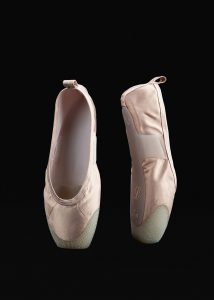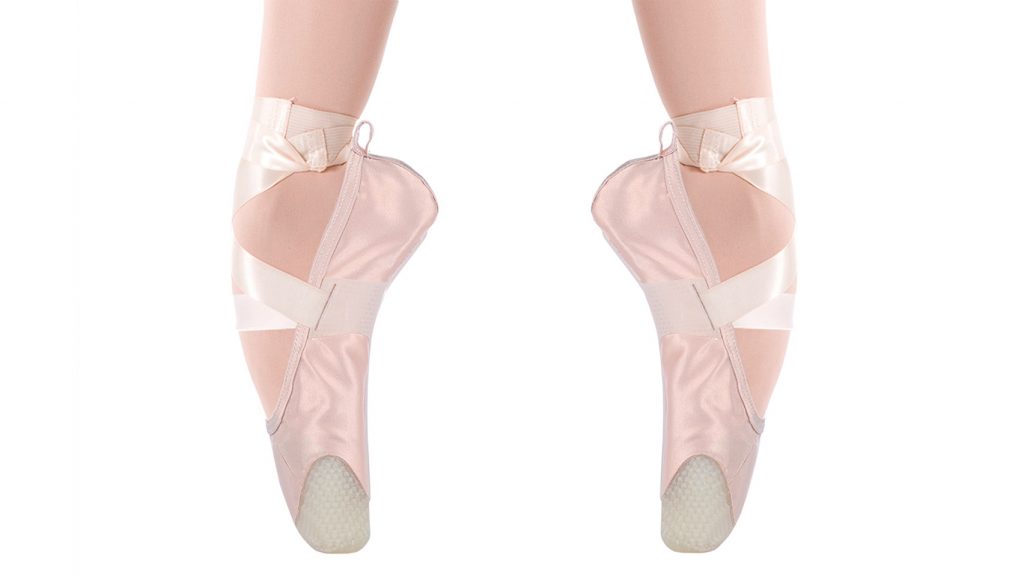 Ballet dancers make what they do look effortless, but it’s far from it. If you’ve ever seen a ballet dancer’s feet, you were probably shocked, but bruised and bloody feet are normal for these athletes. Dancers accept that their work is going to cause them pain, but Bezalel Academy of Arts and Design graduate Hadar Neeman realized, after seeing a ballet dancer friend’s feet, that she could do something about it.
Ballet dancers make what they do look effortless, but it’s far from it. If you’ve ever seen a ballet dancer’s feet, you were probably shocked, but bruised and bloody feet are normal for these athletes. Dancers accept that their work is going to cause them pain, but Bezalel Academy of Arts and Design graduate Hadar Neeman realized, after seeing a ballet dancer friend’s feet, that she could do something about it.
Neeman graduated with a degree in product design and was looking for a field where she could apply 3D printed fabrics. After seeing the damage her friend had suffered from dancing, she began investigating the creation of a 3D printed ballet shoe – as far as she knew, no one had made one yet, although 3D printing has been employed to create several other types of footwear, such as athletic shoes, sandals, and high heels.
“I learned about pointe shoes and the more I got into the field, the more I realised that there was a lot of potential for improving the existing shoe and improving the quality of life of the dancers,” said Neeman.
 Neeman designed and 3D printed a ballet shoe called P-rouette. She used a lightweight lattice structure for the sole as well as the insole. The satiny upper part of the shoe was cut on a special shoemaker’s last that Neeman designed herself, and is placed between the sole and insole during printing, trapping it so that no glue or stitches are needed. The toe of the shoe is 3D printed from the same lightweight lattice material.
Neeman designed and 3D printed a ballet shoe called P-rouette. She used a lightweight lattice structure for the sole as well as the insole. The satiny upper part of the shoe was cut on a special shoemaker’s last that Neeman designed herself, and is placed between the sole and insole during printing, trapping it so that no glue or stitches are needed. The toe of the shoe is 3D printed from the same lightweight lattice material.
As with most other 3D printed shoes, the P-rouette shoe is customizable in order to perfectly fit the feet of each individual dancer. The dancer simply takes a scan of his or her feet, using an app, and the scan is then used to create a detailed map and then a 3D model. Each shoe is then optimized for perfect fit and comfort.
“We are living at an age where technology is prevalent and accessible in almost any field, particularly in sports,” said Neeman. “Why were pointe shoes left behind? In order to allow customization for professional dancers, most pointe shoes are still created by hand using traditional techniques.”
Those techniques leave a lot to be desired; dancers commonly pad their shoes to safeguard against injuries, but injuries still happen. P-rouette shoes offer extra support in addition to customized fit, protecting against the kinds of injuries that are common to ballet dancers. The shoes are also three times more durable than conventional ballet shoes, which typically last through only 10 hours of dance.
It will be interesting to hear feedback from ballet dancers who try out the 3D printed P-rouette shoe in regards to its comfort and level of protection from injury. Could the production of ballet shoes become an industry that gets taken over by 3D printing? If the technology can reduce pain and injury, there’s little reason not to use it. The footwear industry as a whole is embracing the mass customization possibilities that 3D printing offers, and Neeman is right – why not ballet shoes? It’s high time that ballet dancers got some relief.
Discuss this and other 3D printing topics at 3DPrintBoard.com or share your thoughts below.
[Source: Dezeen / Images: Hadar Neeman]Subscribe to Our Email Newsletter
Stay up-to-date on all the latest news from the 3D printing industry and receive information and offers from third party vendors.
You May Also Like
Gorilla Sports GE’s First 3D Printed Titanium Cast
How do you help a gorilla with a broken arm? Sounds like the start of a bad joke a zookeeper might tell, but it’s an actual dilemma recently faced by...
Nylon 3D Printed Parts Made More Functional with Coatings & Colors
Parts 3D printed from polyamide (PA, Nylon) 12 using powder bed fusion (PBF) are a mainstay in the additive manufacturing (AM) industry. While post-finishing processes have improved the porosity of...
$25M to Back Sintavia’s Largest Expansion of Metal 3D Printing Capacity Since 2019
Sintavia, the digital manufacturing company specializing in mission-critical parts for strategic sectors, announced a $25 million investment to increase its production capacity, the largest expansion to its operations since 2019....
Velo3D Initiates Public Offering in a Bid to Strengthen Financial Foundations and Drive Future Growth
Velo3D (NYSE: VLD) has been among a number of publicly traded 3D printing firms that have attempted to weather the current macroeconomic climate. After posting a challenging financial report for 2023,...
































